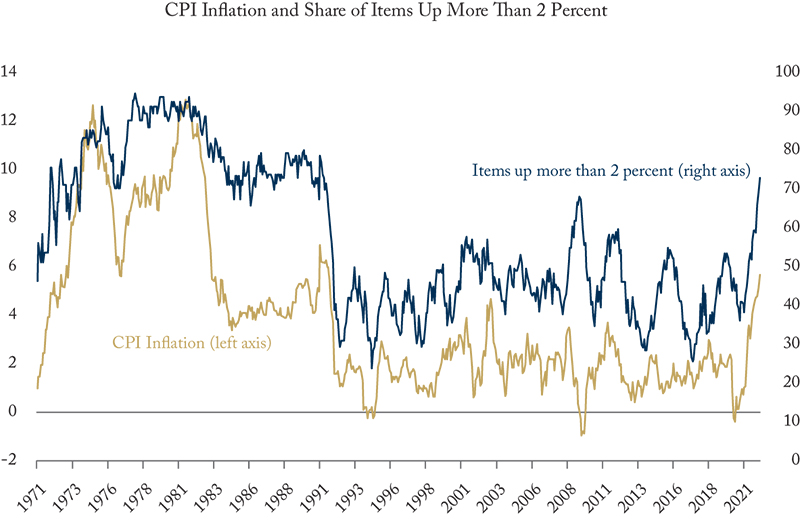What explains surging inflation in Canada and many other advanced economies? Most commentators — correctly — blame loose monetary policy. That contrasts with the 1970s and 1980s, when many people argued inflation was not something central banks could control and that tight money was therefore a case of pain for no gain. With the Bank of Canada and other central banks beginning to tighten, those arguments may return. If they prevail, monetary policy will stay too loose and inflation will keep raging.
Inflation is another term for a persistent decline in the value of money, which like most values is determined by supply and demand. If the Bank of Canada promotes growth in the supply of Canadian dollars that exceeds growth in the demand for Canadian dollars, their value falls compared to the value of the goods and services people buy and sell with them. The general level of prices rises: that’s inflation.
This macro take, however, is not how people experience inflation. What we notice in our daily lives is movements in individual prices. Gasoline costs more today than the last time we filled up. On our last trip to the store, the price of lettuce surprised us. This time, it’s the price of milk. It’s as though different products are taking different-size bites out of our dollar at different times, rather than the dollar itself shrinking.
Arguments that inflation is about supply shocks or price-gouging for individual items become more attractive when monetary policy tightens, because tight monetary policy hurts. Mortgages with floating rates or that are coming up for renewal cost more. Business credit gets scarcer. Spending slows or declines, and jobs follow. People want alternatives. Go after the speculators! Subsidize fuel! Slam on wage and price controls! But the experience of the 1970s and 1980s is clear: without tighter monetary policy, inflation stays high.
One way to bridge the gap between the macro view and everyday experience is to look at prices across the board. Statistics Canada publishes 185 CPI sub-indexes on its website. We can check how many of them are up by more than key amounts, the Bank of Canada’s two-per cent target being an obvious choice. If only a few are, changes in the total CPI might well reflect specific circumstances, such as a poor coffee harvest, that will pass in time. On the other hand, if many of these indexes are up, something more systematic is driving down the value of the dollar.

The figure shows, from the early 1970s to the latest reading for February 2022, the year-over-year increase in the total CPI, as well as the percentage of items in the CPI with year-over-year increases larger than two per cent. During the period of low and stable inflation from the mid-1990s until last year, the share of items with year-over-year increases above the Bank of Canada’s two-per cent target was — no surprise — usually around half. On occasions when the CPI was up or down by unusual amounts, the share of items up by more than two-per cent tells us something about whether monetary policy was badly off course. In 2009, for example, when headline inflation plunged, the majority of the sub-indexes were up more than two per cent, suggesting peculiar circumstances rather than monetary policy being off course.
During the 1970s, by contrast, nearly everything was up nearly all the time. The share of items up more than two per cent was often around 80 or even 90 per cent. During the 1980s, CPI inflation was lower, but the share of items up more than two per cent emphasizes the broad-based erosion of money’s value before another round of tightening and the beginning of inflation targeting in the 1990s.
We have just come through two years when the Bank of Canada held its target for the overnight rate of interest close to zero and bought hundreds of billions of dollars in government debt. The Bank’s response to the pandemic was understandable but the year-over-year increase in the CPI is higher than it has been in 30 years. And so is the share of items with year-over-year increases above two per cent. Inflation is widespread. Only monetary policy can fix that.
Mawakina Bafale is a research assistant at the C. D. Howe Institute, where Jeremy Kronick is associate director, research, and William Robson is CEO.




